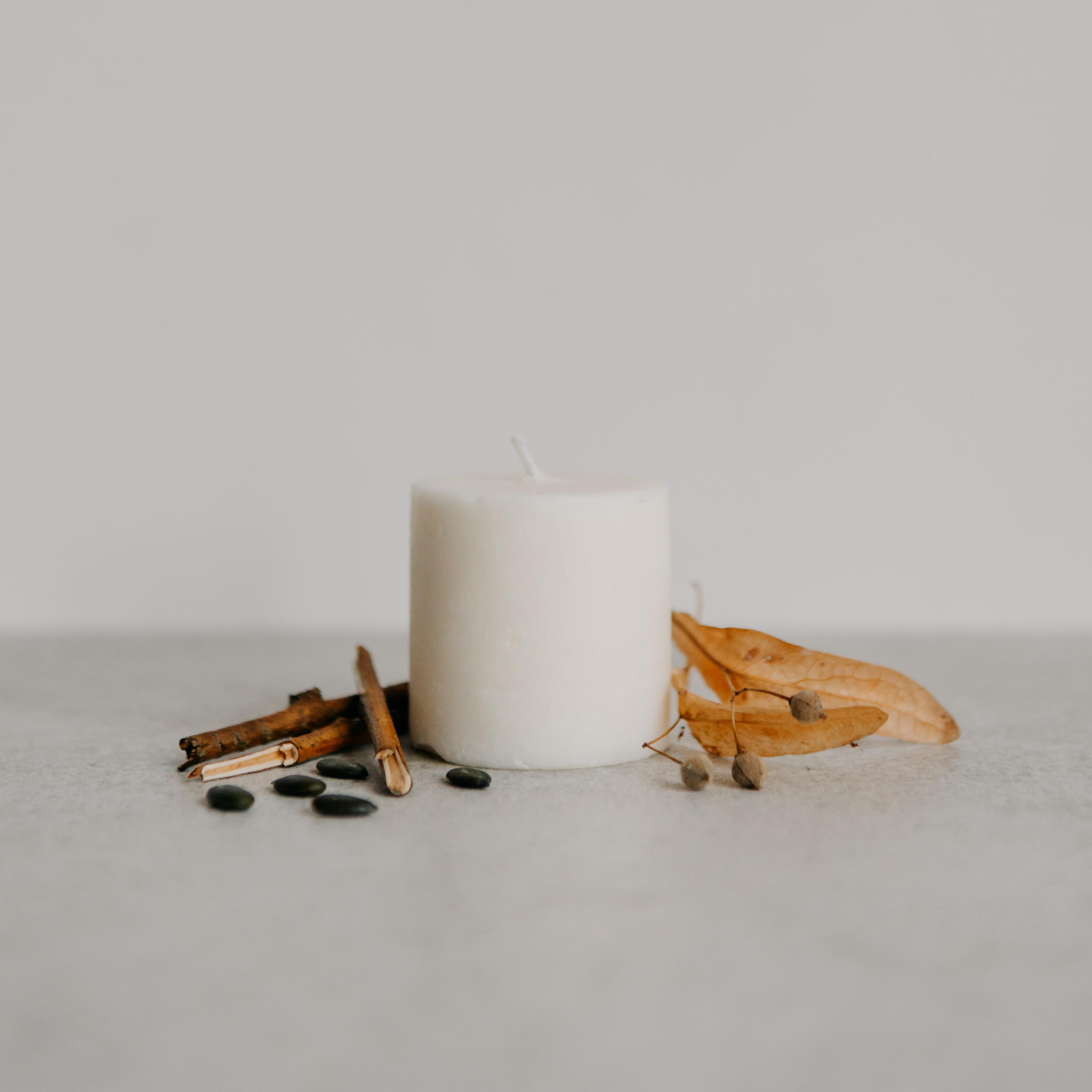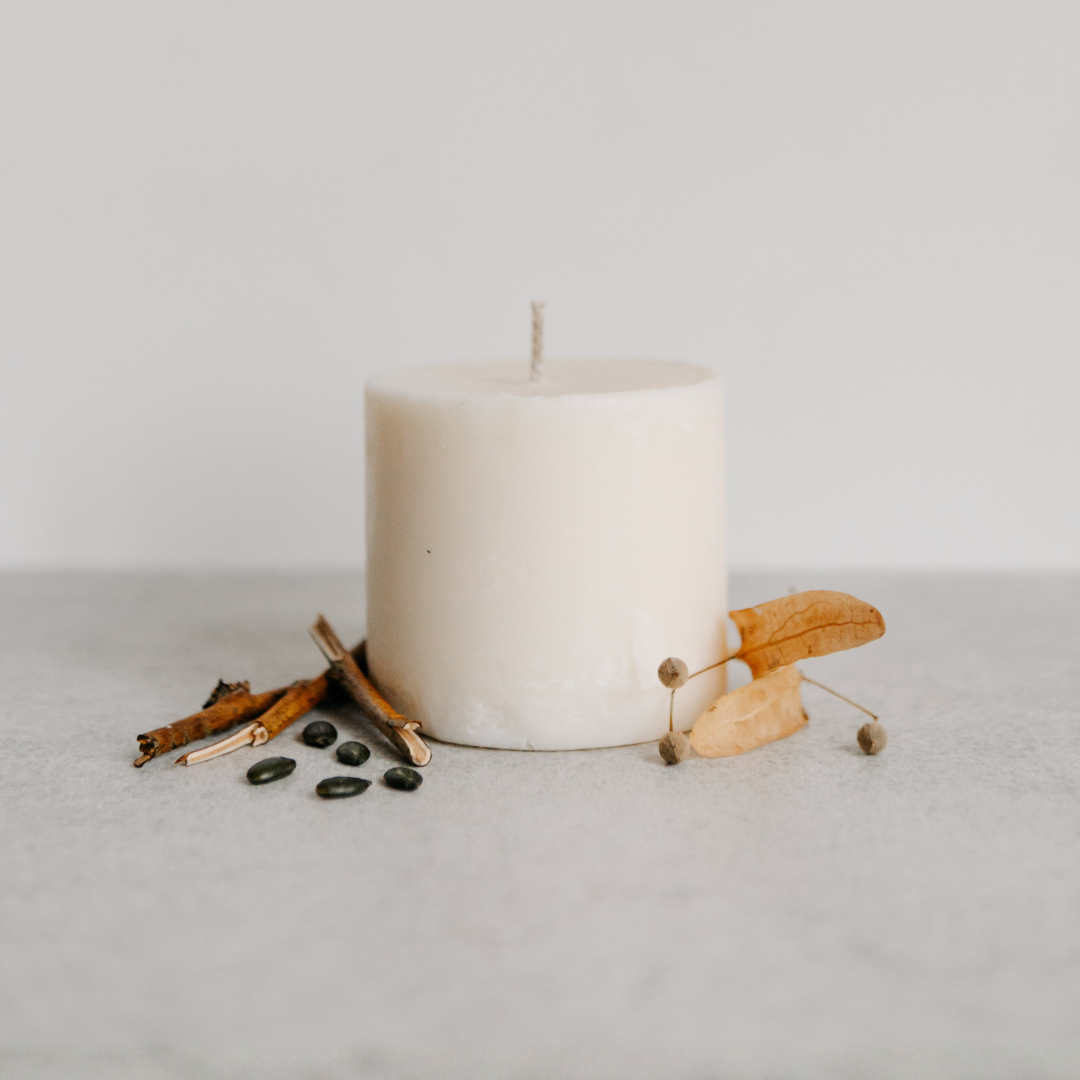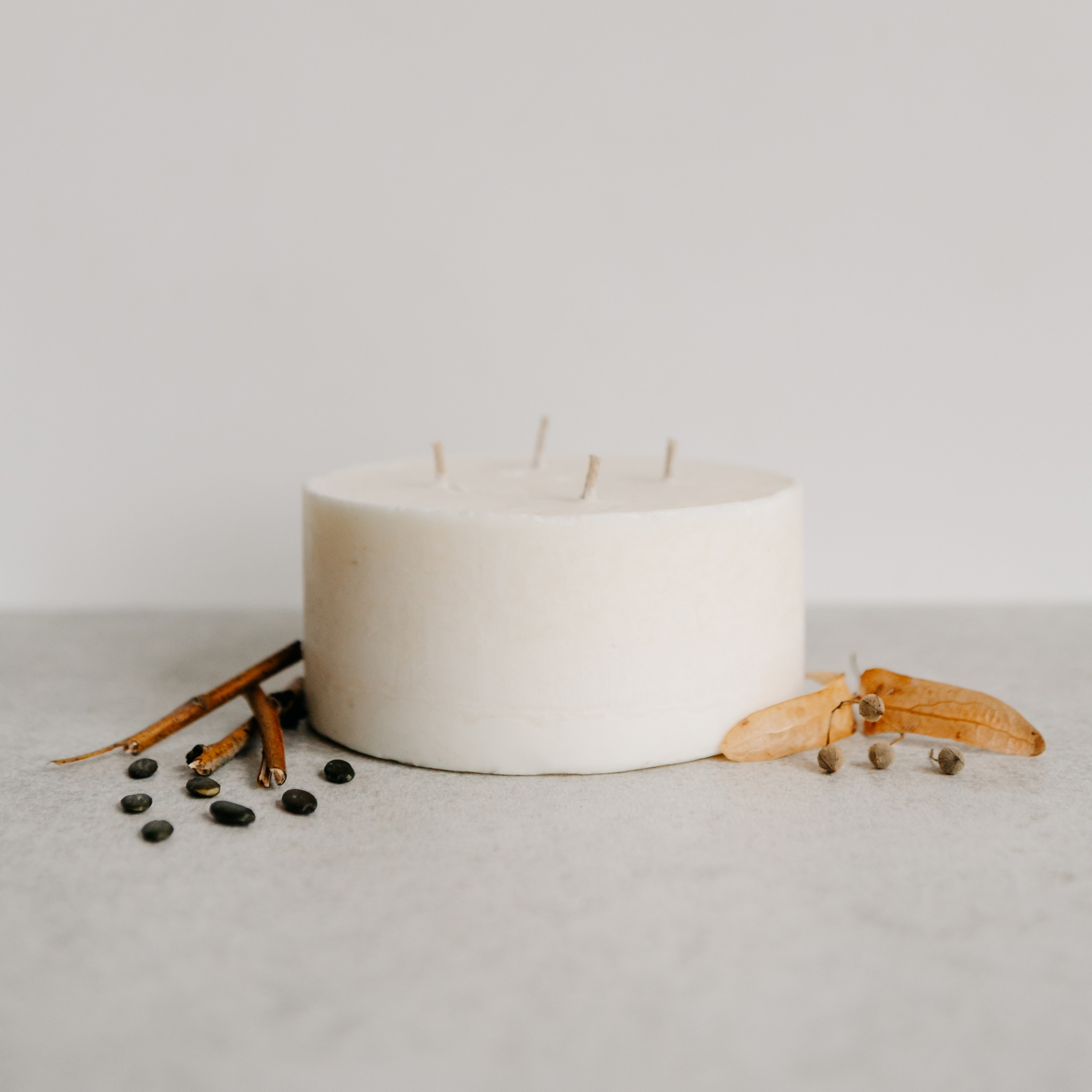Tucked away down a bumpy track, with views across to The Seven Sisters, Daniel (also known as the Pilgrim Potter) lives off-grid in the old Coastguard cottages with his dog, Ben. He’s been caretaking the space for the owner while she’s away on a seven-year pilgrimage and in return, he’s found the perfect backdrop for a life of creativity.
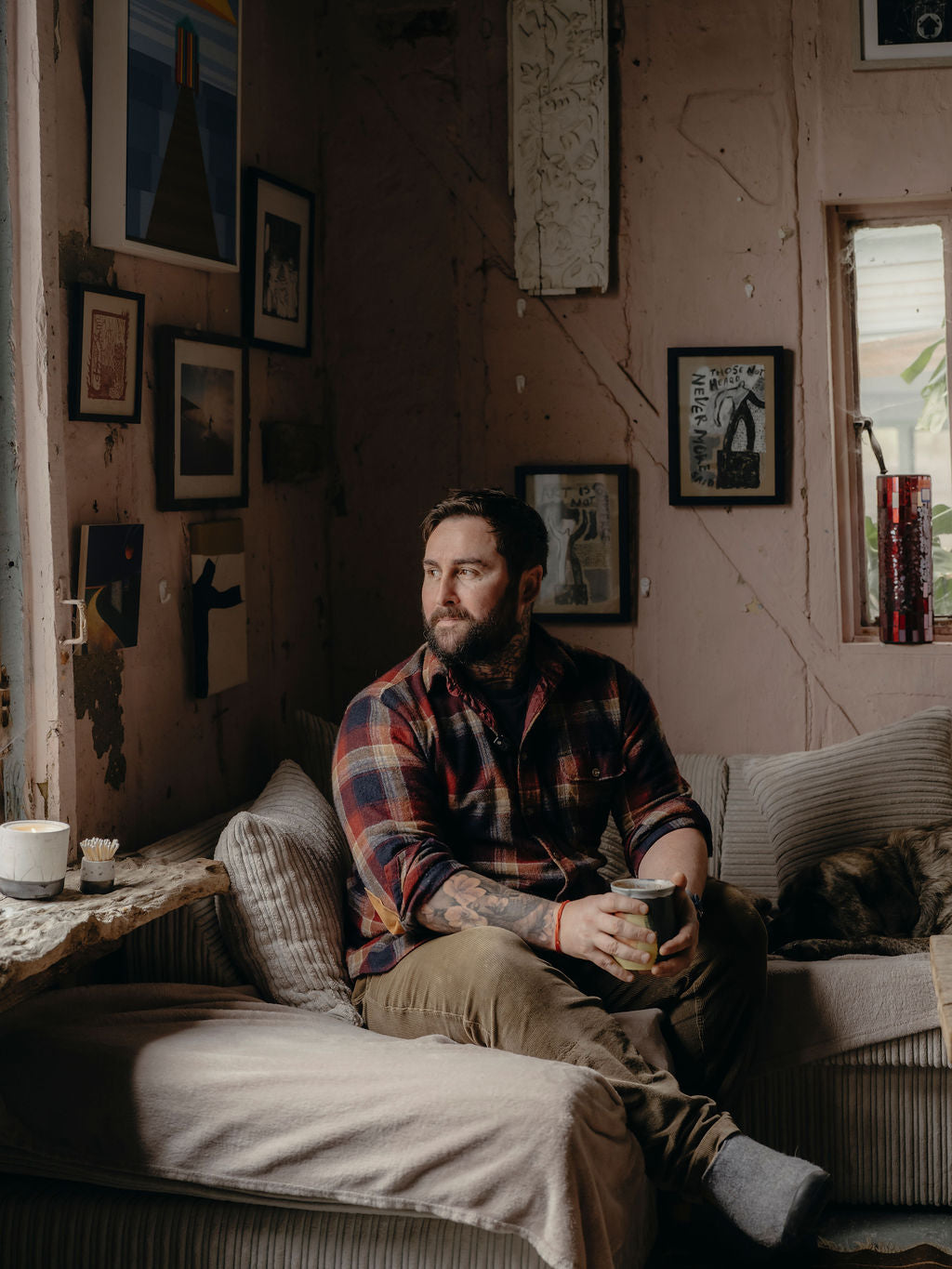
Where you live is totally extraordinary – tell us more about it…
For the last three and a half years I’ve lived in one of the old Coastguards Cottages on the Sussex coast. It’s off-grid, so there’s no electricity unless I fire up the petrol generator, which I use if I want to whizz up some soup or do the hoovering. Otherwise, it’s candles all the way, which are a big part of life here. I’m halfway through my seven-year tenancy, looking after the house while the owner is on her pilgrimage. Ben and I are the only permanent residents; the other cottages are only occasionally used by the descendants of the last coastguard. Even though we’re just two miles from town, it’s down a bumpy and rather unfriendly track so it feels wonderfully isolated – the perfect place for reflection and creativity.
What does a normal day look like for you?
I try to keep a good structure during the week, working roughly 9–5, though it doesn’t always happen and sometimes I’ll find myself in the studio at 3am! We don’t have curtains here, so I’m led by my circadian rhythms – in summer that means waking at 4am but in winter the days are much shorter. I get up, make my coffee, walk Ben, feed the cats and head into the studio. I throw from 9am until 1 or 2pm without stopping, once I get into the flow I follow the momentum. After that, I take a siesta, which is such a luxury, I know! Mornings are usually for commission-based projects and afternoons are more creative. I don’t really have a plan; I just make whatever comes through. I try to knock off around 5, but it often bleeds into the evening.
Do you have any rituals or habits that help your practice?
Rhythm is really important, even little things likeI trying to start work at roughly the same time each day or starting the morning with a coffee in my favourite mug, these small rituals help settle me into the studio. Walks with Ben are essential too – they give my mind space to wander and ideas often come mid-stride.
What inspires your work?
Mostly the world around me – the cliffs, the sea, the seasonal changes. Living here off-grid, you notice everything: the light, the wind, the tides. Memories and moments from past travels or people I’ve met often sneak into my work too. I like to think each piece carries a little of that energy.
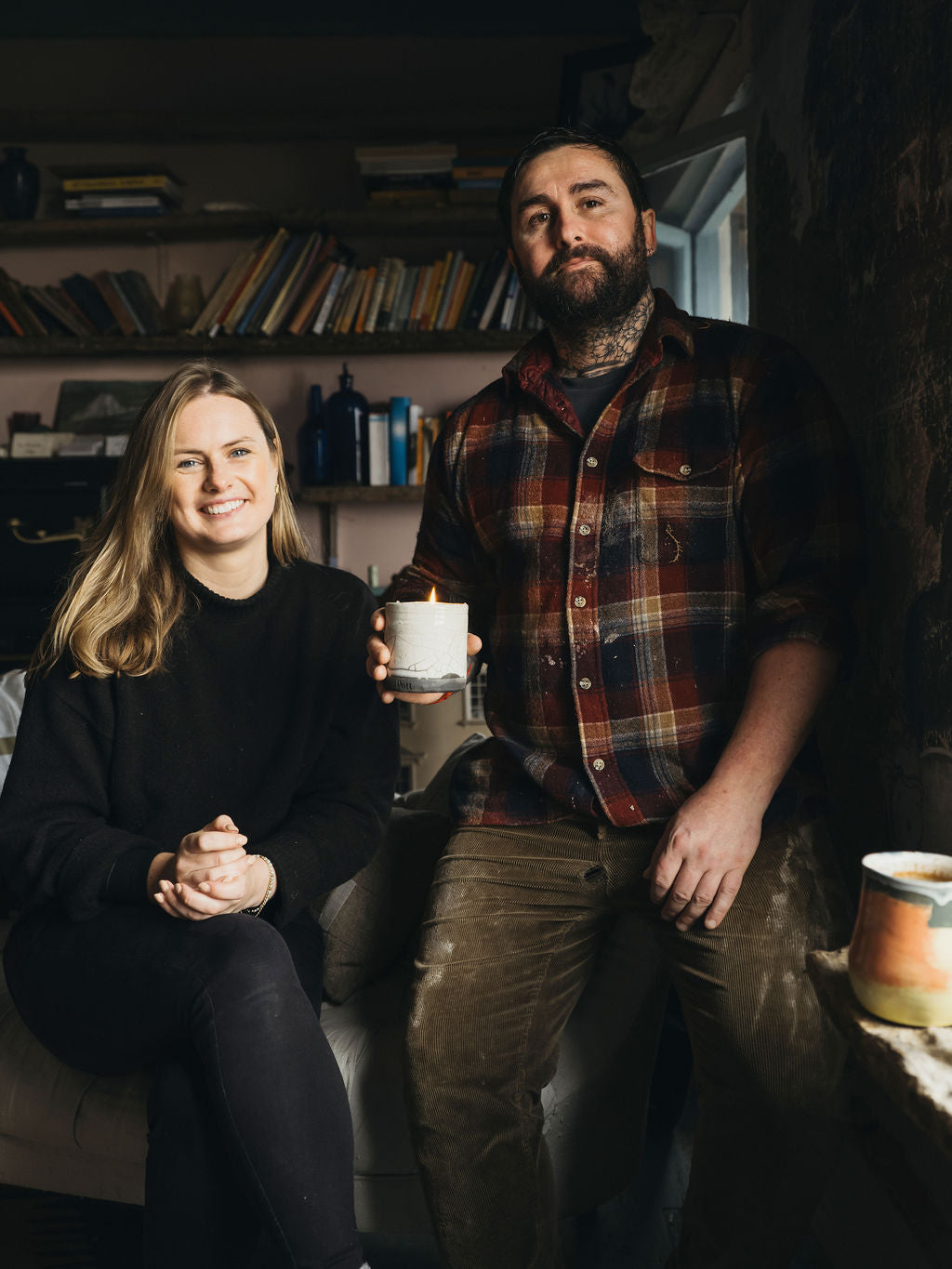
How do you approach creativity on days when inspiration is low?
I turn to meditation, yoga, or a brisk walk by the sea. Everything here is tidal, so I’ve learned that creativity comes and goes in waves. Sometimes when it feels low, I trust that it will return in the following days. Go with the flow and trust the process.
Tell us about your evenings- what’s on the agenda?
After work, I come back inside, light the fire, make some supper and spend the evenings knitting or working with silver clay, listening to an audiobook. I’m pretty much always doing something with my hands, whether it’s potting or crafting or cooking.
What's your go-to meal?
Everything and anything! I love cooking. It’s a big part of my life here but I’ve had to adapt. I try to be as self-sufficient as possible - I grow my own fruit and vegetables and I pressure can soups and chowders so I’ve got food to see me through the winter if the storms come in and it’s tricky to get to the nearest town. It’s only a couple of miles away but the track is pretty bumpy so it feels good to know I’ve got enough sustenance to keep me going! Basically, anything delicious. Give me a hearty stew cooked on the Rayburn coupled with a bit of craft corner and an audiobook...HEAVEN.
Ooo, we love a podcast/Audiobook recommendation- what have you been listening to?
Right now this is my book list…
The binding by Bridget Collins
The kingdoms by Natasha Pulley
Anything by TJ Klune
Girl woman other by Bernardine Everisto
And back on topic, how did you get into pottery?
I’ve been potting for six years now. There’s something really meditative about shaping, throwing and transforming earth into something functional and beautiful. I’ve always had a creative practice and what started as a curiosity and the desire to make something that was in my imagination has turned into full time job.


